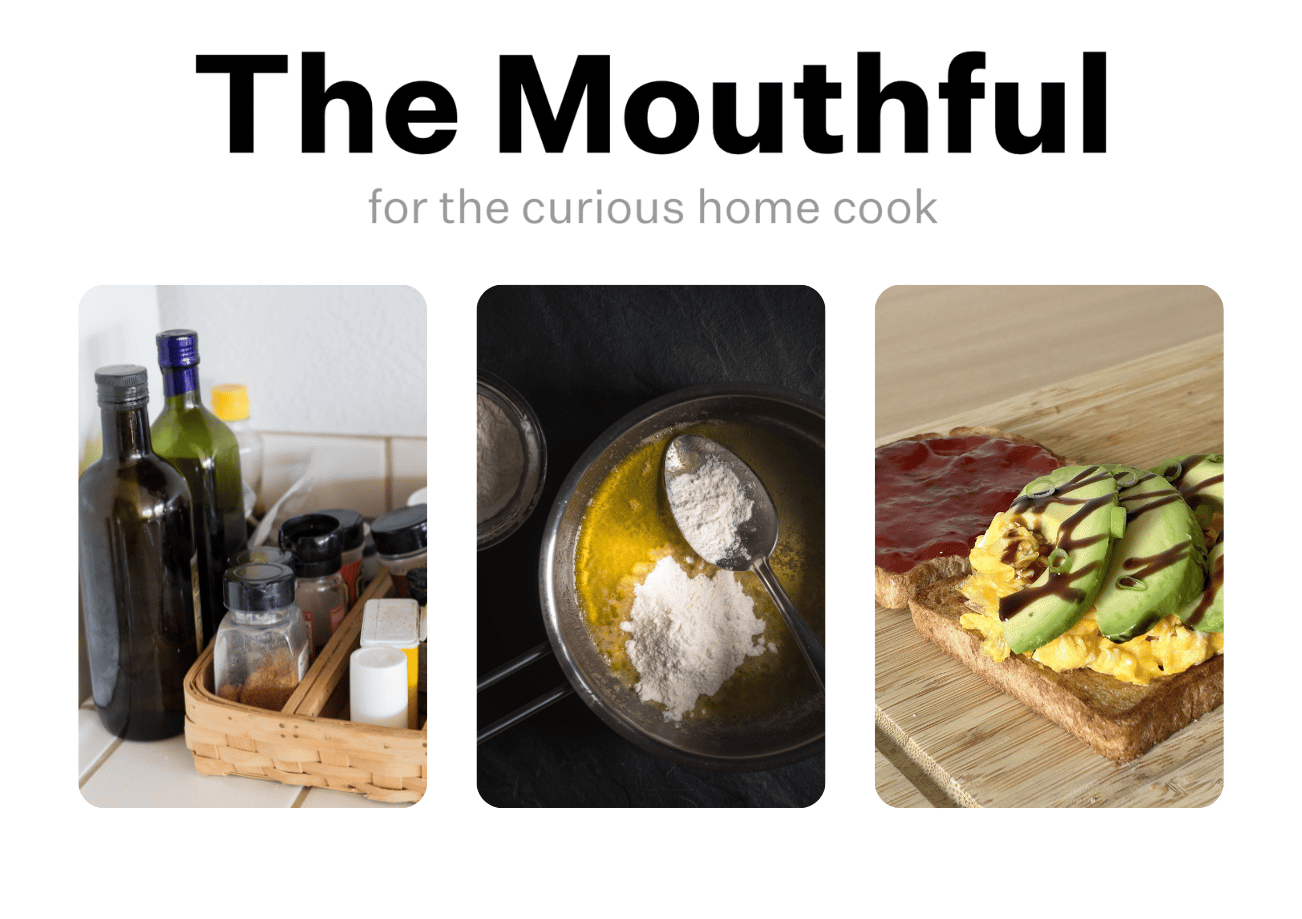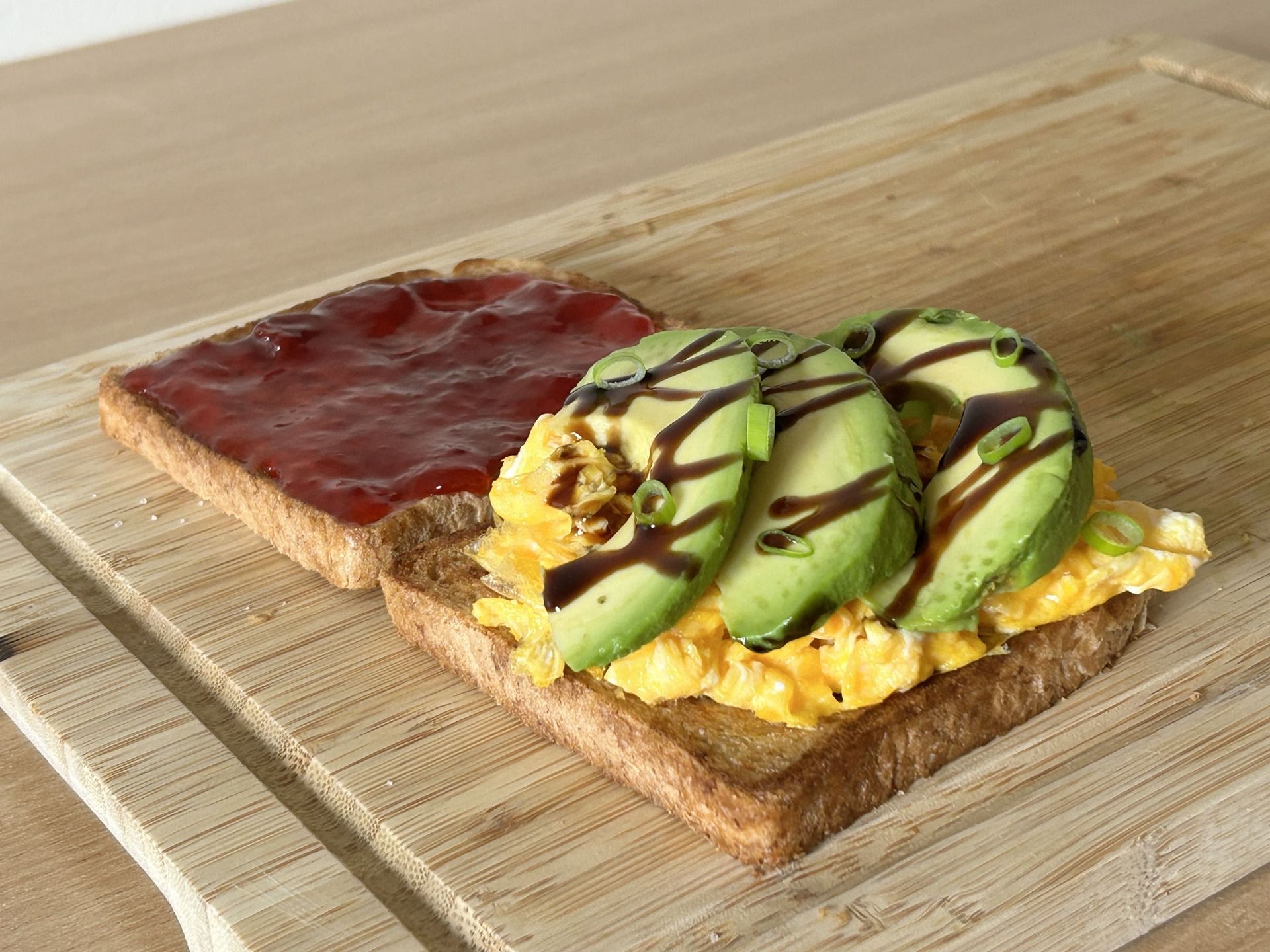- The Mouthful
- Posts
- Stove Side Essentials
Stove Side Essentials
for seamless cooking, plus quick meals, roux science, & a breakfast time winner

Good morning. Today we’re diving into what cooking essentials you need right by the stove.
Why? Great cooking is all about rhythm. If the basics are within arm’s reach, it’s easier to season, taste, and adjust without breaking stride.
LIFESTYLE PROTOCOL 🤝
Stove side essentials

Here’s what every home cook should keep right by the stove:
Cooking foundations
Salt — season in layers with a proper pinch
Neutral oil — for high-heat searing
Olive oil — for finishing or gentle sautés
Handy liquids
Squeeze bottle of water — loosen stuck bits, adjust sauce consistency
Vinegar — brighten and balance richness in seconds
Soy sauce — instant umami depth, splash to taste
Spices & tools
Black pepper, MSG or bouillon, and your go-to spices in small jars
A spoon rest to keep tasting and stirring easy (without wrecking the counter)
Why it works: This is how chefs set up their stations: essentials close by, stored in small refillable containers. It reduces friction and makes flavor adjustment second nature — something you won’t do if you have to run to the pantry every time.
Pro move: Use smaller jars or squeeze bottles by the stove, then refill from bulk storage so oils and spices stay fresh.
RECIPE RECOMMENDATIONS ✅
Quick back-pocket meals

Put your stove-side essentials to use with some lunches that come together in minutes, especially when you have cooking staples at the ready:
READER Q&A 🧠
Oil vs. butter roux

Question: “How is a roux different when you use oil instead of butter?” - Dixon P.
Answer: Since both are fat sources, the end product will be very similar, so feel free to use either.
Some recipes call for oil instead of butter when making a roux. For example, traditional gumbo uses oil, which creates a looser texture. The roux will thicken your dish effectively as long as the flour is coated and cooked in oil—even if you use butter.
Butter may impart a slightly different flavor than neutral oil, but in a complex dish like gumbo, you likely won’t be able to pick out the difference.
While equal parts flour and fat is a good starting point, making a roux isn't an exact science. It’s a forgiving technique. The chemistry behind how a roux works is what’s more important: the key is making sure each starch granule gets coated with oil, allowing it to disperse evenly in the broth rather than clumping together.
TLDR: It doesn’t matter what kind of fat you use in a roux, you just need enough to coat all of the flour granules. If your roux has dry spots when coming together, add a bit more fat until it resembles wet sand, then it’s ready to thicken your liquid.
WINNING READER SUBMISSION 🏆
Breakfast time
This week’s winner is Julian G., who made egg toast topped with balsamic and spring onions with a side of jam toast.

Reply with your best home-cooked food photos for a chance to win & be featured!
EXTRA HELPINGS 🍽️
A read: Is it okay to freeze cheese?
In a minute or less: Premium Spanish chips
What we’re watching: Mumbai's #1 street food
Food science: Physical element of flavor
Join the Cook Well App: Beta testing is here!

Was this forwarded to you? Subscribe here.
Not reaching your inbox? Try this.
Need more inspiration? View the newsletter backlog.